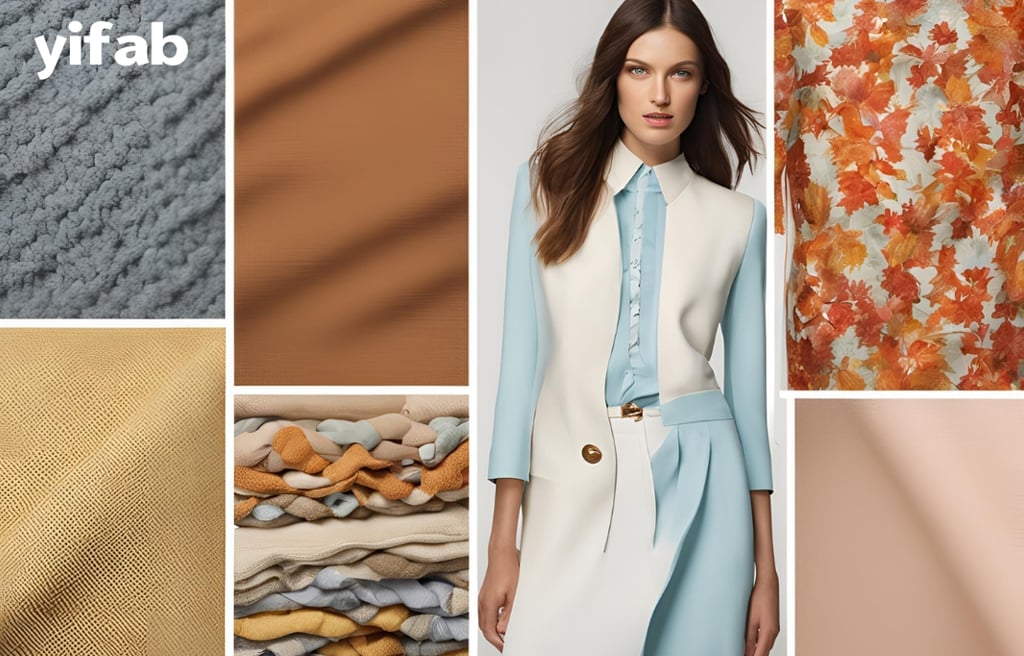Choosing the Right Fabrics for Seasonal Fashion: A Designer’s Guide
9/23/20242 min read


In fashion design, fabric selection is key to balancing comfort and style. Choosing the right fabrics based on seasonal changes not only enhances the practicality of designs but also improves the overall wearing experience for consumers. Whether it’s the heat of summer or the cold of winter, designers need to pick fabrics that cater to the specific characteristics of each season. This article provides tips on choosing the most suitable materials for seasonal fashion, helping designers match fabric choices to seasonal needs.
1. Summer Fabrics: Breathability and Lightness
High temperatures and humidity in summer demand fabrics that are breathable and absorb moisture to keep the wearer cool and comfortable. Opting for lightweight and well-ventilated fabrics is crucial. Here are a few fabrics ideal for summer:
- Cotton: Known for its softness, breathability, and moisture absorption, cotton is a top choice for summer. It helps wick sweat away, keeping the skin dry, making it perfect for T-shirts, shirts, and summer wear.
- Linen: Linen is lightweight and moisture-wicking with excellent breathability. Its natural wrinkle adds a casual touch to summer outfits.
- Tencel: Tencel is not only eco-friendly but also offers excellent moisture absorption and wicking capabilities, making it ideal for light dresses and shirts.
2. Winter Fabrics: Warmth and Wind Resistance
Cold winters require clothing that provides warmth and protection from the wind. Selecting thick, insulating fabrics is essential for winter fashion. Here are a few fabrics suitable for winter:
- Wool: Wool is a classic winter fabric known for its warmth. Its natural fiber structure provides both insulation and moisture-wicking properties, making it perfect for coats, sweaters, and scarves.
- Flannel: Flannel is soft to the touch and warm, ideal for shirts, pajamas, and casual jackets. Its thick texture effectively keeps out the cold.
- Fleece: Fleece is lightweight yet warm, making it a popular choice for modern outdoor winter apparel. It offers excellent insulation while maintaining a lightweight feel.
3. Spring and Autumn Fabrics: Transition and Comfort
In spring and autumn, temperatures can fluctuate, so designers need to select fabrics that provide comfort and adaptability:
- Blended Fabrics: Cotton-linen or cotton-silk blends combine the softness of cotton with the breathability and sheen of linen or silk, making them perfect for transitional weather.
- Knitted Fabrics: Knits are popular in spring and autumn due to their elasticity and softness, making them suitable for jackets, lightweight sweaters, and dresses.
4. Flexibility to Adapt to Trends
In addition to considering the season, designers should take fashion trends into account. For example, a particular season might feature trends like layering or loose silhouettes, which demand fabrics with flexibility and good draping qualities. Therefore, designers should remain flexible in fabric choices, balancing functionality with fashion.
Conclusion
Choosing the right fabrics for seasonal fashion requires designers to consider temperature, wearing comfort, and fashion trends. Light and breathable fabrics for summer and warm, wind-resistant fabrics for winter are essential. By carefully selecting fabrics, designers can ensure that their creations are both stylish and practical, meeting the unique demands of each season.
